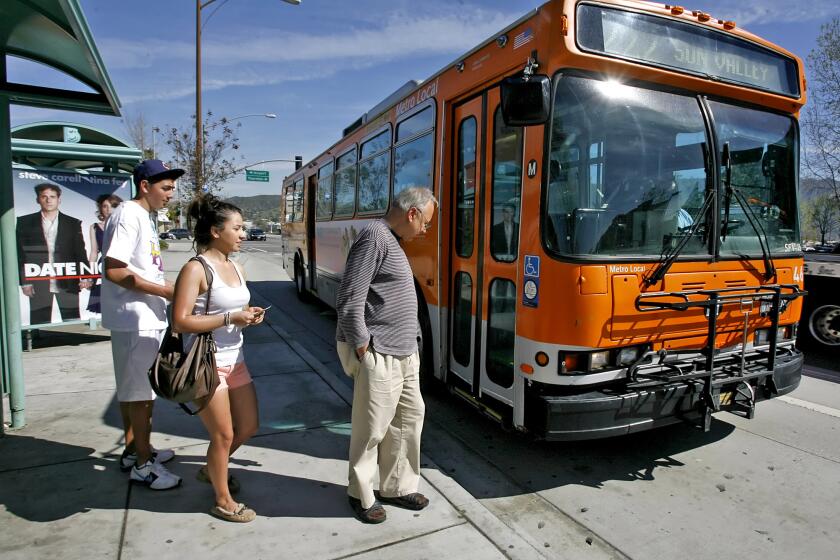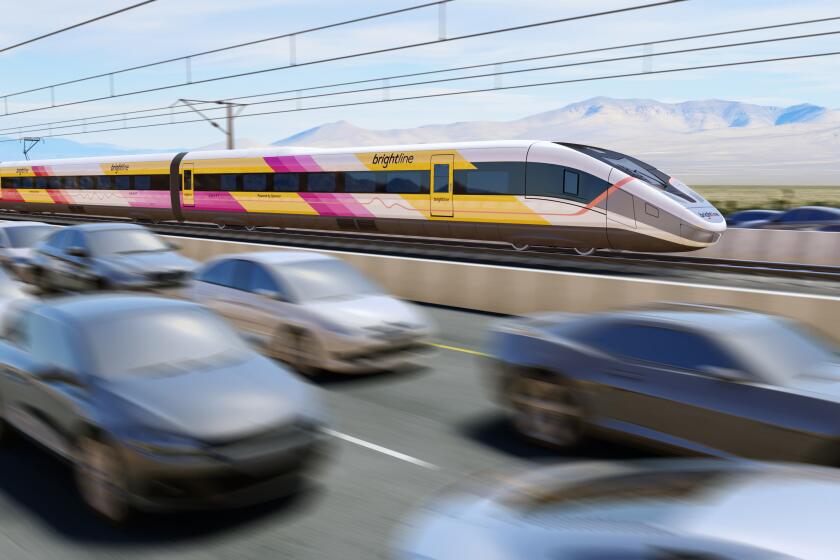Take a Freeway Stroll for a New Look at the 110
On Sunday, June 15, people will get a chance to experience a freeway differently -- by walking and bicycling on it. This event, ArroyoFest, culminates more than a decade of community action and debate about the Pasadena, or 110, Freeway.
The Pasadena Freeway, which opened in 1940, was initially called the Arroyo Seco Parkway. It had been designed for uninterrupted and pleasurable driving through park-like surroundings, with a visual connection to the communities the driver passed through. Built to carry 27,000 automobiles per day at 45 mph as a parkway, the freeway today carries an average of more than 130,000 cars at speeds often exceeding the official limit of 55 mph -- when it’s not congested. It is the most accident-prone freeway in the region.
Still, this roadway provides a taste of what the parkway experience was supposed to be. It has graceful turns that follow the natural topography. There are no billboards or diesel fumes from big trucks, which are banned. You can see generous vistas, bridges and a fair amount of greenery.
The feel of the parkway, however, has been compromised with overgrown areas that hide hillside views. Chain-link fences, barbed wire and metal guardrails have replaced the rustic wooden fencing.
With its intolerable traffic and high number of accidents, the freeway has become a far cry from a pleasure ride. But change is in the air. During the last decade, community concerns about congestion, high accident rates, lack of maintenance and the deteriorating visual nature of the drive peaked. This emerging sentiment coincided with the rise of a “parkway movement” across the U.S. Nationally, preservationists, environmentalists, community residents and others are seeking to recapture aspects of original parkway design to reconnect communities with their surrounding landscapes.
Here, there is talk of a wholesale re-envisioning of the Arroyo Seco as a new kind of transportation corridor. This would include the new Gold Line rail system, bike paths, including a commuter bikeway, expanded bus service, pedestrian walkways and, ultimately, a freeway that could become, at least in part, a parkway.
Existing urban parkways such as the Arroyo Seco and Route 163 in San Diego can be assets rather than liabilities if they are considered as one piece of an integrated transportation network and if emphasis is again placed on making the drive pleasurable. Parkways can be valued if they are perceived as connectors rather than separators of neighborhoods. To bring back the pleasure in the drive might seem like a radical departure, but if you get to walk or bike on the freeway, it might not seem so radical after all.
Sign up for The Wild
We’ll help you find the best places to hike, bike and run, as well as the perfect silent spots for meditation and yoga.
You may occasionally receive promotional content from the Los Angeles Times.



